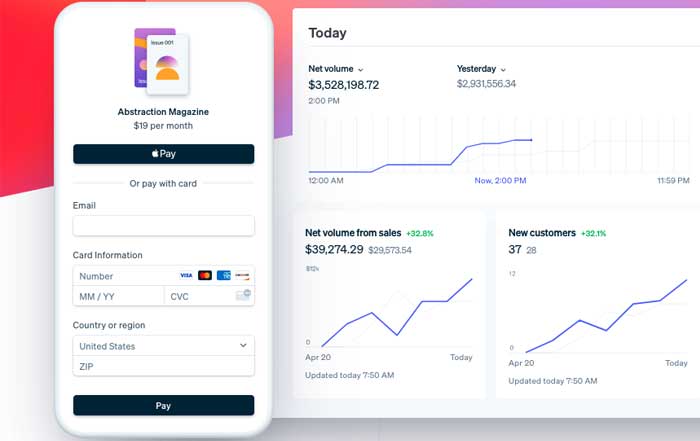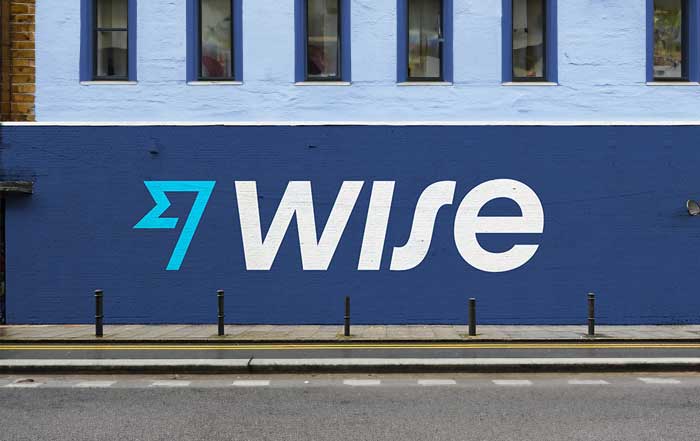In the year 2025, the rapid acceleration of digital transformation has redefined the way businesses and financial institutions operate. Digital literacy is no longer a supplementary skill; it has become a fundamental requirement for individuals, companies, and entire economies striving to remain competitive. In the context of business and fintech, the capacity to navigate digital platforms, interpret data, safeguard against cyber threats, and engage with emerging technologies determines not only organizational success but also the resilience of industries at large. The integration of digital literacy into financial ecosystems ensures that innovation is both inclusive and sustainable, allowing businesses to thrive in a global environment marked by complexity, interconnectivity, and disruption.
Defining Digital Literacy in the Modern Economy
Digital literacy extends beyond the ability to use devices or operate applications. It encompasses a broad spectrum of competencies that include critical thinking, adaptability, and ethical awareness when engaging with technology. For business leaders and fintech innovators, digital literacy implies understanding blockchain frameworks, interpreting artificial intelligence models, applying data analytics for strategic decisions, and adopting regulatory compliance standards in digital environments. In essence, digital literacy equips professionals and organizations to harness technology responsibly while maximizing opportunities across the financial services sector.
Learn more about how digital transformation reshapes industries at FinTechX – Business.
The Rising Importance of Digital Literacy in Business Strategy
Across industries, organizations are embedding digital literacy into their core strategies. Executives recognize that digital fluency is critical not only for efficiency but also for growth, customer experience, and risk mitigation. For example, global enterprises in the United States, United Kingdom, and Germany are investing heavily in training programs designed to upskill employees in data handling, cybersecurity, and collaborative digital platforms. Digital literacy is also crucial for fostering innovation, as companies seek to leverage AI-powered tools to optimize supply chains, predict consumer behavior, and streamline financial operations.
Businesses that lack a digitally literate workforce face higher risks of stagnation, market irrelevance, and exposure to fraud or system vulnerabilities. By contrast, organizations that prioritize digital education can adapt faster to shifting economic environments and capitalize on the emergence of fintech solutions such as mobile banking, digital lending, and decentralized finance.
Discover insights into evolving workplace skills at FinTechX – Jobs.
Digital Literacy as the Foundation of Fintech Innovation
Fintech has become one of the most transformative forces in the global economy. Startups and established players alike rely on digital literacy as the engine of their innovation. Whether developing blockchain-based payment systems, deploying robo-advisors for wealth management, or creating advanced cybersecurity protocols, fintech professionals must combine technical expertise with a deep understanding of customer behavior and regulatory frameworks.
Digital literacy empowers fintech founders to navigate complex technologies such as cryptocurrency exchanges, digital wallets, and AI-driven fraud detection. It ensures that entrepreneurs can innovate responsibly while addressing critical issues such as data privacy, anti-money laundering compliance, and digital inclusion for underserved populations. For consumers, digital literacy is equally vital, as it enables them to understand the risks and benefits of new financial products, protecting themselves from misinformation or exploitation.
Read more about global fintech trends at FinTechX – Fintech.
Digital Literacy and AI in Financial Services
Artificial intelligence has become a cornerstone of modern financial services, and digital literacy is the bridge that allows organizations to deploy AI tools effectively. In 2025, the reliance on machine learning and predictive analytics extends across banking, investment management, insurance, and regulatory compliance. Digital literacy equips professionals with the ability to interpret AI-driven outputs, evaluate algorithmic fairness, and ensure responsible deployment of automated systems.
For example, financial institutions in the United States and Europe are increasingly using AI to conduct credit risk assessments, detect fraudulent activity, and enhance customer service through chatbots and virtual assistants. Without the necessary digital literacy, however, executives may misunderstand model limitations, misinterpret complex datasets, or fail to identify algorithmic biases that could inadvertently harm consumers. This highlights the critical intersection between technical proficiency and ethical responsibility in AI adoption.
Employees at all levels of organizations are expected to develop fluency in understanding AI-driven recommendations, whether in portfolio management, compliance auditing, or strategic planning. This democratization of AI knowledge strengthens accountability and creates a culture where data-driven decision-making is both transparent and inclusive.
The Role of Digital Literacy in Strengthening Global Economies
As economies become increasingly interconnected, digital literacy is central to national competitiveness. Countries such as Singapore, South Korea, and Germany have invested heavily in education and workforce development to build digital competencies across their populations. This approach not only enhances their domestic fintech industries but also positions them as global leaders in financial innovation.
For emerging economies in Africa, South America, and Southeast Asia, digital literacy offers a path toward financial inclusion and sustainable development. Mobile banking platforms, digital payment solutions, and blockchain-based remittance services are helping communities gain access to financial services that were previously out of reach. To sustain these advancements, governments and private enterprises must collaborate to provide training programs, regulatory frameworks, and infrastructure that enhance digital understanding among both businesses and consumers.
By embedding digital literacy within broader economic strategies, nations strengthen resilience against systemic shocks while fostering innovation. Countries that succeed in this endeavor not only create robust fintech ecosystems but also empower their populations to participate meaningfully in global markets. Explore more about the relationship between financial systems and growth at FinTechX – Economy.
Case Studies from Leading Fintech Hubs
Examining global fintech hubs illustrates how digital literacy underpins success. In the United States, major fintech companies leverage data-driven innovation to expand services from digital payments to decentralized finance. Employees are trained to navigate complex regulatory landscapes, while consumers are encouraged to understand tools like cryptocurrency trading platforms and peer-to-peer lending applications.
In the United Kingdom, London’s role as a financial capital is sustained by a culture of continuous learning, where digital skills are cultivated through public and private initiatives. This focus enables both startups and established banks to collaborate on innovations in areas like open banking, where secure data sharing requires digitally literate stakeholders on both ends of the transaction.
Singapore has established itself as Asia’s fintech powerhouse by combining supportive regulation, investment in education, and advanced technological infrastructure. The Monetary Authority of Singapore promotes digital financial literacy among consumers and mandates transparency in fintech operations, ensuring that individuals and businesses can engage confidently with cutting-edge technologies.
Meanwhile, Germany has focused on integrating digital literacy into its Mittelstand (small and medium-sized enterprises), ensuring that family-owned businesses remain competitive in an increasingly digitized global economy. Each of these cases demonstrates that fintech hubs thrive where digital literacy is deeply embedded in both institutional and consumer practices.
For additional insights on how global trends influence industries, visit FinTechX – World.
Cybersecurity, Trust, and Digital Responsibility in Fintech
As fintech adoption accelerates worldwide, the importance of cybersecurity and digital responsibility grows proportionally. Digital literacy is the foundation that empowers organizations and individuals to navigate an environment where cyber threats are increasingly sophisticated and constant. In 2025, cybercrime remains one of the most significant risks for businesses and consumers, with attacks targeting everything from digital wallets to decentralized finance platforms.
For financial institutions, digital literacy is not just about defensive strategies but about embedding a culture of proactive security. Employees must be trained to identify phishing attempts, interpret security protocols, and adopt best practices in data encryption and multi-factor authentication. This is especially critical in sectors such as mobile payments and online banking, where consumer trust is fragile and easily compromised by breaches. Organizations like JPMorgan Chase, HSBC, and leading fintech firms across North America and Europe are investing in cybersecurity education at scale to ensure their workforce is prepared to counter evolving threats.
For consumers, digital literacy is equally vital. Understanding the risks associated with online transactions, recognizing fraudulent schemes, and protecting personal data are essential competencies in an era where financial services are primarily digital. Governments and regulators are responding with national awareness campaigns and policies that emphasize digital responsibility, but long-term success depends on continuous education and engagement. Without widespread literacy in cybersecurity practices, even the most advanced fintech solutions can become vulnerable.
To explore more about digital protection and innovation, visit FinTechX – Security.
Digital Literacy in Business & Fintech Quiz
Test your knowledge of digital transformation and fintech innovation
Ethical Considerations and Digital Inclusion
Digital literacy also encompasses an ethical dimension. As fintech advances, ensuring inclusivity becomes a central concern. Millions of people globally remain outside formal financial systems, and digital solutions provide a unique opportunity to close this gap. However, without sufficient literacy, many risk being excluded once more, unable to navigate the very tools designed to empower them.
Countries in Africa, South Asia, and parts of Latin America illustrate this challenge vividly. Mobile money platforms such as M-Pesa have transformed financial inclusion in Kenya and beyond, but sustaining such progress requires education that ensures users can confidently manage transactions, avoid fraud, and leverage financial services for entrepreneurship and growth.
Similarly, in advanced economies, segments of the population—such as older generations or individuals with limited access to education—struggle to adapt to digital-first systems. For businesses and policymakers, promoting literacy is both a social responsibility and an economic necessity. Ethical fintech innovation depends on ensuring that products are accessible, understandable, and supportive of diverse communities. Learn more about socially responsible innovation at FinTechX – Green Fintech.
The Impact of Digital Literacy on Founders and Startups
For fintech founders, digital literacy is a critical factor that shapes competitiveness and long-term survival. Startups are built on the ability to innovate, but innovation cannot thrive without a deep understanding of the technologies, risks, and opportunities inherent in digital finance. In 2025, founders are expected to be fluent not only in traditional entrepreneurship but also in coding, blockchain protocols, artificial intelligence integration, and regulatory compliance in multiple jurisdictions.
In the United States and United Kingdom, venture capital firms increasingly assess the digital literacy of founding teams when making investment decisions. Investors recognize that without a skilled and knowledgeable leadership team, fintech startups may falter when facing complex regulatory challenges or rapid shifts in consumer behavior. Similarly, in Asia and Europe, accelerator programs place significant emphasis on equipping founders with digital competencies, blending entrepreneurial mentoring with technology training.
Startups that prioritize digital literacy are better positioned to scale globally, manage risks, and build sustainable businesses. By contrast, those that neglect it risk falling behind in a market that demands agility and foresight. For detailed perspectives on founders and innovation, visit FinTechX – Founders.
Digital Literacy in Cryptocurrency and Blockchain Markets
Cryptocurrency has evolved from a niche innovation into a mainstream component of global financial systems, but the sector remains one of the most misunderstood areas of finance. Digital literacy is crucial for investors, regulators, and entrepreneurs who wish to participate in blockchain-driven markets responsibly. In 2025, the digital asset ecosystem encompasses everything from Bitcoin and Ethereum to central bank digital currencies (CBDCs) and tokenized real-world assets.
For institutional investors, literacy means understanding how blockchain works, interpreting smart contracts, and evaluating the risks of decentralized finance (DeFi) platforms. This involves more than technical knowledge; it also requires awareness of geopolitical developments, regulatory landscapes, and market volatility. In the United States, Switzerland, and Singapore, regulators are actively shaping guidelines to balance innovation with consumer protection, and only those with a strong foundation in digital literacy can keep pace with these changes.
For everyday users, digital literacy ensures safer participation in crypto markets. Consumers who fail to grasp the mechanics of private keys, transaction verification, or custody solutions may face significant financial losses. Education programs in Asia, Europe, and Africa are being rolled out to help populations understand both the opportunities and the risks of cryptocurrency adoption. To stay informed about evolving digital asset landscapes, visit FinTechX – Crypto.
Stock Exchanges and the Role of Digital Proficiency
Traditional stock exchanges are also undergoing profound digital transformations. Trading has shifted from physical floors to algorithmic platforms, where milliseconds determine market outcomes. In 2025, exchanges in New York, London, Tokyo, and Frankfurt rely heavily on digital infrastructures, and literacy in this space is essential for both institutional and retail investors.
Algorithmic trading, blockchain-based settlement systems, and tokenized securities are changing the dynamics of global capital markets. Investors must understand how digital platforms function to avoid misinterpretations that could lead to poor decisions or missed opportunities. Digital literacy ensures they can analyze algorithmic behaviors, monitor risks in high-frequency trading environments, and adapt to innovations like digital bond offerings or tokenized real estate investment trusts.
Stock exchanges themselves are pushing for greater transparency and education. Many now provide public resources designed to explain advanced technologies to participants at all levels. This is particularly relevant as tokenization blurs the boundaries between traditional securities and digital assets, requiring investors to navigate a hybrid landscape where literacy is the only safeguard against missteps. Learn more about financial markets at FinTechX – Stock Exchange.
Digital Literacy in Global Investment Strategies
Investment strategies have shifted dramatically as fintech solutions reshape how wealth is built and preserved. Wealth managers and individual investors must be literate in using robo-advisory platforms, ESG analytics tools, and AI-powered forecasting systems. In 2025, portfolios are no longer static; they are dynamic ecosystems influenced by real-time data, global policy decisions, and machine learning models.
Digital literacy enables investors to distinguish between credible insights and algorithmic noise. For example, while AI-driven platforms may provide sophisticated recommendations, it takes a skilled professional to interpret those outputs in light of long-term goals, market context, and ethical considerations. Without such skills, investors risk being misled by black-box systems that offer efficiency but not accountability.
Across global markets, investment literacy also extends to understanding sustainability metrics. Investors increasingly demand insight into environmental, social, and governance (ESG) criteria, and digital tools provide those insights. However, without literacy, investors may struggle to discern greenwashing from genuine sustainability initiatives. This dynamic is particularly critical as institutions align with the United Nations Sustainable Development Goals and global net-zero commitments. Explore the intersection of finance and responsibility at FinTechX – Environment.
Education, Workforce Reskilling, and the Future of Digital Literacy
Education is the backbone of digital literacy. In 2025, businesses, governments, and academic institutions are converging on a shared understanding that digital proficiency must be woven into every stage of professional and personal development. Universities across the United States, United Kingdom, Germany, and Singapore are integrating courses on artificial intelligence, blockchain, cybersecurity, and data analytics into standard curricula, ensuring that graduates enter the workforce with the foundational knowledge needed to navigate an increasingly digitized economy.
Beyond traditional education, workforce reskilling has become a strategic priority for companies across industries. Automation and fintech innovation are reshaping job requirements at a pace unmatched in previous industrial revolutions. Employees who once relied on analog methods of operation are now expected to use cloud-based collaboration platforms, interpret predictive analytics dashboards, and engage with AI-driven decision-making tools. Without structured training programs, the workforce risks being left behind, which would widen skill gaps and exacerbate inequality. Companies such as Microsoft, Google, and leading fintech firms are collaborating with public institutions to launch global reskilling initiatives, helping millions of workers transition into digital-first roles.
For smaller businesses and startups, digital literacy training is often viewed as a resource-intensive task. Yet neglecting it can result in inefficiencies, vulnerabilities, and missed opportunities. Governments in regions such as Scandinavia, Canada, and Australia have introduced tax incentives and grants to support SMEs in upskilling their teams. These initiatives acknowledge that resilient economies are built on inclusive growth, where businesses of all sizes can adapt to technological shifts. For perspectives on how global business ecosystems evolve with changing skills, visit FinTechX – Business.
Digital Literacy and Employment Opportunities
The rise of fintech and digital business models has generated new categories of employment, but these opportunities are accessible only to those with adequate literacy. In 2025, careers in blockchain development, AI ethics, cybersecurity auditing, and data science are in high demand. The fintech sector alone continues to expand at a rapid pace, employing professionals across finance, technology, law, and design.
Digital literacy is not limited to technical roles. Customer service representatives in banks must understand digital platforms to guide clients effectively, compliance officers must evaluate algorithmic transparency, and marketing teams must analyze digital engagement metrics with sophistication. The demand for hybrid skills, where financial expertise is combined with technological fluency, is rising globally. Countries that cultivate such talent pools are positioned to lead in the knowledge economy, while those that neglect it risk being sidelined.
For readers interested in opportunities in the evolving fintech sector, visit FinTechX – Jobs.
Preparing for the Future: Trends in Digital Literacy
The next decade will bring even greater demands on digital literacy as emerging technologies reshape industries. Quantum computing, augmented reality, and autonomous financial systems are no longer distant possibilities; they are on the horizon of mainstream adoption. Businesses must prepare now by embedding digital literacy into long-term strategies.
One trend is the personalization of learning through adaptive digital platforms. These platforms use AI to assess individual skill gaps and deliver customized training modules, ensuring employees remain ahead of industry demands. Another is the global harmonization of digital standards, where international bodies and governments collaborate to create universal frameworks for cybersecurity, data privacy, and digital education. This trend is particularly relevant in cross-border financial transactions, where consistency reduces risks and improves efficiency.
Sustainability also intersects with digital literacy. As fintech companies integrate environmental considerations into their models, literacy in both technology and sustainability metrics becomes necessary. This dual competence allows professionals to evaluate green bonds, carbon credit platforms, and other innovations with clarity. Learn more about the convergence of sustainability and finance at FinTechX – Green Fintech.
Global Perspectives on Digital Literacy in Business and Fintech
The importance of digital literacy in business and fintech cannot be viewed solely through the lens of individual nations. Instead, it must be considered as a global imperative that influences competitiveness, inclusivity, and innovation worldwide. Different regions demonstrate varied approaches to fostering literacy, shaped by cultural, economic, and regulatory contexts.
In North America, particularly the United States and Canada, emphasis has been placed on private sector innovation supported by a robust ecosystem of venture capital, accelerators, and educational institutions. Digital literacy initiatives here often emerge from industry partnerships that combine the expertise of technology companies, universities, and financial institutions. This collaborative model has enabled rapid adoption of fintech innovations, but it also creates disparities, as regions with fewer resources may lag behind in equipping their populations with the necessary skills.
In Europe, digital literacy is treated as a public good. Countries such as Germany, France, and the Nordic nations have integrated digital education into national strategies, ensuring that literacy is not only a workplace requirement but a civic responsibility. These efforts are reinforced by the European Union’s policies on digital transformation, data protection, and sustainability. By aligning literacy with regulation, Europe fosters trust and transparency in financial technologies, building resilience against systemic risks.
In Asia, countries like Singapore, South Korea, and Japan lead with strong government-led initiatives, blending regulatory foresight with industry collaboration. These nations view digital literacy as an engine for economic growth and a driver of global influence in fintech. Meanwhile, countries such as India and Thailand are demonstrating how mobile-first literacy campaigns can empower rural and underserved populations to access financial services, fostering inclusive growth.
In Africa and South America, digital literacy has transformative potential for financial inclusion. Mobile money platforms, digital lending applications, and blockchain-based remittance solutions are breaking down barriers to financial participation. However, without comprehensive education programs, these innovations may inadvertently deepen inequality by creating divides between those who are literate and those who are not. Sustained progress in these regions depends on policies that emphasize literacy at the community level, supported by partnerships with international organizations.
For further exploration of how regional dynamics shape financial transformation, visit FinTechX – World.
Long-Term Outlook for Digital Literacy in Business and Fintech
Looking ahead, digital literacy will increasingly become a baseline expectation for participation in the global economy. Organizations that fail to integrate literacy into their strategies will struggle to remain relevant, while nations that neglect it risk economic marginalization. The convergence of artificial intelligence, blockchain, quantum computing, and sustainable finance will demand literacy that extends far beyond basic digital skills.
Businesses must adopt continuous learning models, embedding literacy as a dynamic, evolving process rather than a static requirement. This means creating corporate cultures where employees are encouraged to experiment with new technologies, question algorithmic outputs, and embrace ethical considerations in decision-making. Leaders who prioritize literacy will find their organizations better prepared to navigate uncertainty, attract investment, and build trust with consumers.
On the consumer side, digital literacy will be synonymous with empowerment. Individuals who understand how to manage digital wallets, interpret AI-driven recommendations, and assess sustainability claims will have greater control over their financial futures. Conversely, those who lack literacy may find themselves vulnerable to exploitation, misinformation, or exclusion from essential services. This divide highlights the urgency of ensuring that literacy is accessible, equitable, and globally standardized.
Governments and international organizations will play a critical role in this outlook. Initiatives such as the World Economic Forum’s digital upskilling programs, the OECD’s education frameworks, and the United Nations’ Sustainable Development Goals provide a blueprint for how literacy can be advanced at scale. However, the responsibility does not rest solely with policymakers. Private sector leaders, investors, and educators must all collaborate to ensure literacy is a shared priority across industries and borders.
For updates on global fintech and economic trends, visit FinTechX – News.
Conclusion
In 2025, digital literacy is not a luxury but a necessity for success in both business and fintech. It underpins innovation, strengthens economies, fosters inclusivity, and safeguards against risks in an interconnected world. From the rise of cryptocurrency and decentralized finance to the transformation of stock exchanges and global investment strategies, literacy ensures that individuals and organizations can engage confidently with evolving technologies.
The journey toward universal digital literacy is complex and requires a collective commitment from governments, businesses, educators, and communities. It is not enough to simply provide access to technologies; people must be empowered to understand, evaluate, and use them responsibly. The future of fintech and business will be defined not only by the speed of innovation but by the depth of literacy that supports it.
For businesses, the imperative is clear: cultivate cultures of continuous learning, invest in reskilling, and prioritize inclusivity. For individuals, the path forward is one of active engagement, where curiosity, adaptability, and ethical awareness are as valuable as technical proficiency. For policymakers, the challenge is to create frameworks that balance innovation with responsibility, ensuring that literacy becomes a universal right rather than a selective privilege.
As fintech continues to transform the way people live, work, and interact with financial systems, digital literacy will remain its most vital currency. It is the bridge between innovation and trust, between opportunity and equity, and between today’s challenges and tomorrow’s possibilities.










